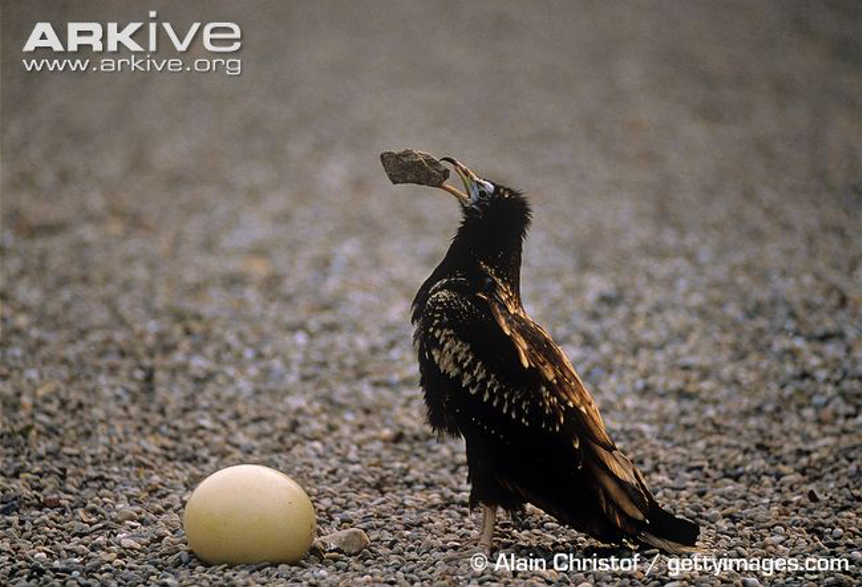Chapter 2: The Rational in Non-Humans
In our effort to distinguish humans from other biological organisms in terms of irrationality and spirituality it is critical to establish a baseline for comparison. While it is difficult to discuss spirituality in humans, it makes absolutely no sense to project measures of spirituality on other animals. But one can examine the extent to which their actions appear rational or not. So we begin our exploration of the importance of the human irrationality by looking at its opposite – the rational. That is, we can to establish what other general animal behavior is like. Is it primarily rational or irrational? Specifically we need to see how animals behave in their routine lives.
To do this we start with a definition of the rational objectives of all animal species as being concerned with food, shelter, procreation and immediate pleasures. The success of any species is tied to these four necessary aspects of life. They are what will ensure that their genes will survive to be passed on to their offspring. Although across the animal kingdom the actual requirements for a species survival are incredibly diverse, they all need to be achieved within the lifetime of the individuals of the species. While the requirements for one species’ existence may need to be found within a very narrow range of environmental conditions, such as giant pandas that survive only in bamboo forests, in other species, such as the tardigard (Figure 4), that can actually survive for periods of time in the harsh environments such as in the vacuum of outer space[1].
Figure 4. Tardigrade that measures 0.5 mm / 0.02 inches and is one of the hardiest animals known. (https://en.wikipedia.org/wiki/Tardigrade).
For our examination we focus on higher order animals and their rational behavior patterns. They meet immediate needs and result in tangible benefits. We look here at a select number of examples of non-human animals that represent the broader rational approach to to meet survival requirements. In particular we explore the use of tools in animals.
Food
Of course there are many behaviors that animals use to acquire their food. These could involve complex strategies for hunting and gathering food items. Many predators have developed complex coordinated action and social interactions for stalking and killing prey, such as can be seen with the archetypical actions of a pride of lions picking out a wildebeest on the African savanna. But in addition to highly evolved actions, many animals are known to select and modify items from their surroundings and use these items in their procurement of food[2].
We start with an example from the bird kingdom. While parrots are thought to be fairly intelligent through their well-known and amusing ability to mimic the voice of humans, in the bird world, crows, ravens and rooks better display traits indicating high intelligence in birds. Most critically this is reflected in their intelligent, ingenious use of tools. For example, ravens are known to drop walnuts in front of passing cars to get the nuts cracked and the meats made accessible. They have been observed using sticks to reach food that is beyond their grasp. They have also been observed to actually select specific objects for use in displacing water in a container to more efficiently access articles of food. This selection process can be quite complex. That is, they choose objects that meet their needs on the basis of both their size and weight (Figure 5). Another notable example of tool use by birds is that of the Egyptian vulture. It manipulates rocks with its beak to pound them onto the shell of an ostrich egg until it cracks (Figure 6).
Figure 5. The 'water displacement' tasks (pictured) were all variations of the Aesop's fable in which a thirsty crow drops stones to raise the level of water in a pitcher (http://www.dailymail.co.uk/sciencetech/article-2590046/Crows-intelligent-CHILDREN-Study-reveals-birds-intelligence-seven-year-old.html).
Figure 6. Juvenile Egyptian vulture breaking egg with stone (http://www.arkive.org/egyptian-vulture/neophron-percnopterus/image-G30003.htm).
Moving to mammals, whales and dolphins are known to be especially intelligent for their communication and learning of human-taught tricks. But they also express their abilities when it comes to acquiring food. For example, a pod of bottlenose dolphins in Australia has been seen tearing off pieces of sponge and wrapping them around their noses, apparently to prevent abrasions while they poked about the sea floor hunting for buried animals as food.
Even the strong jaws of the sea otter aren't always enough to pry open a tasty clam or oyster. That's when this charismatic marine mammal gets wise. The otter makes use of stones. They might use one on its belly as an anvil or they might uses one to pound open its mollusk meal[3].
If we consider primates, there are many examples of animals modifying objects for procuring food. Capuchin monkeys make stone knives by banging flint against the floor until the pieces are sharp. Primates also pick up or break off sticks and after some alteration stick, poke, or jab them into holes in various situations to acquire bush babies, ants, honey or other food sources. One case of such alterations of an object for purposes of getting food can be found in the Senegal chimpanzees[4]. In one reported case sticks were not only selected and stripped of their leaves, but the ends were sharpened by the chimpanzees by chewing them down to a point. Once pointed the “spears” could be jabbed into holes in trees to acquire bush babies that would otherwise have been inaccessible.
Shelter
Many higher animals are known to manipulate their environment and produce tools to enhance their use as shelter. For example, the octopus is heralded as the most intelligent non-human invertebrate on the planet. Octopuses have been observed carrying shells that can be used to protect them when threatened (Figure 7). Hermit crabs are the archetypal example of an animal that has a shelter made from materials in its environment. It also uses the shells from other species as its mobile home (Figure 8). The Blanket octopus has been known to use “tools” for shelter from attack[5]. They tear off tentacles from a jellyfish and wield them as a weapon. Both of these uses of “tools” show the application of inventive rational activity to the task of procuring shelter.
Figure 7. An octopus using a bivalve shell for its own protection (https://en.wikipedia.org/wiki/Tool_use_by_animals#In_cephalopods).
Figure 8. Hermit crab “housed” in the shell from another species (https://en.wikipedia.org/wiki/Hermit_crab).
Nests in birds and primates provide one of the many, many examples where materials are fashioned to improve their use in life situations in very rational ways. In the world of mammals, for simplicity and ease, chimpanzees select large leaves to shelter themselves from the rain. Elephants use available sticks as back scratchers and for swatting flies making their lives more pleasant. Many animals have developed consistent methods for creating very complex, amazingly detailed constructions with minimum tolerance on the form of the final product (Figure 9). In all cases the use of the tool is clearly related to the specific, rational intent and purpose.
Figure 9. Intricate nest construction of a weaver bird’s nest[6].
Procreation
All higher animals must mate to give rise to future generations that will continue the species. Of course each species has its own mating process. Whether it is the notable tail feathers of the peacock or the relatively over-sized human genitalia, successful attraction of a mate is critical to the species success[7]. But in addition to the way animals are built and how they behave, non-human animal species have also been seen to actually make use of objects to enhance their attractiveness and thus procreation success[8].
The rationality in animals for use in procreation can easily be seen in the usage by some animals of decoration for attraction. Magpies are believed to acquire shiny objects that will attract other ravens. Bearded vultures add color to their plumage by rubbing against certain soils[9].
Looking at modern human’s closest relatives bonobos and chimpanzees, they have been observed making "sponges" out of leaves and moss to suck up water and use the result for grooming, apparently resulting in increased attractiveness to mates. In wild bonobos, tool use is mainly for personal care, cleaning and social purposes. It is to be noted that in both of these primate species tool use is more predominate among the females.
Immediate Pleasures
Finally, in addition to animal’s rational use of tools for food, shelter and procreation, there are also instances of animals making use of tools for immediate pleasures and apparent amusement. While such activities border on the irrational, the results of the tools use is immediate and closely tied in time to activity. Crows actually create toys for their pleasure. Orcas kill for non-food use, possibly in relation to training and practicing their essential life skills in non-life-threatening situations. In addition to humans, a number of primate and non-primate animals have been observed to masturbate[10]. Mammals that masturbate include elephants, bats and marine mammals. In the bird world penguins masturbate. In the reptile world both turtles and lizards have been observed to carry out this kind of activity. In most of these cases other objects in their environment, such as a rock, may be made use of to help self-satisfy. We mention these examples of behavior here as evidence for the use of tools by animals that don’t immediately meet the needs of food, shelter and procreation.
Summary
All these activities can be seen as totally rational - for the specific purpose of enhancing the survival of the fittest in a direct and immediate manner. Poking for food, building shelters, and adorning nests to attract a mate all are limited activities that are widely seen in the species of interest without much individual creativity, variation or abstraction. It is impressive to see how highly evolved are the diverse behaviors of animals. But it is important to note that, as we proceed to explore human rational and irrational characteristics, that all of these activities are expressions of rationality and that it is almost ubiquitous in the animal kingdom. And as humans are ultimately biological species, they too express high levels of rationality for their survival. Our tool making is highly refined and without a doubt a function of our success in occupying almost all areas of the globe.
But it is impossible to see the irrational in the behavior of non-hominin species. It is important for modern humans to recognize that much of our world is the result of rational mimicking of the outburst of a creative irrational discovery. For humans this creative irrational is the basis of the application of our rationality. Together the rational and irrational may be shared essential characteristics that differentiate humans from the other animals and hominins, allowing H. sapiens to out-survive many and to propel us to dominate the globe. As we shall see later, the addition of the creative irrational opened up possibilities of development for both our collective as well as individual consciousnes.
—————— CHAPTER 3: PRE-HISTORIC/PRE-LITERATE HUMAN IRRATIONALITY ———————————
———————— Table of Contents —————————
[1] https://en.wikipedia.org/wiki/Tardigrade
[2] https://en.wikipedia.org/wiki/Tool_use_by_animals
[3] https://en.wikipedia.org/wiki/Tool_use_by_sea_otters
[4] http://news.nationalgeographic.com/news/2007/02/070222-chimps-spears.html
[5] https://en.wikipedia.org/wiki/Blanket_octopus
[6] https://en.wikipedia.org/wiki/Tool_use_by_animals
[7] Morris, D. 1994. The Naked Ape: A Zoologist's Study of the Human Animal. Vintage Press.
[8] http://news.nationalgeographic.com/2015/06/150610-animals-camouflage-decoration-bugs-science/
[9] https://news.nationalgeographic.com/2015/06/150610-animals-camouflage-decoration-bugs-science/
[10] https://gizmodo.com/9-animals-that-masturbate-other-than-humans-1723592357





![Figure 9. Intricate nest construction of a weaver bird’s nest[6].](https://images.squarespace-cdn.com/content/v1/542d4f86e4b06a71cbdb01c9/1584709407786-WME7TWCH39KC95RN0B93/Weaver.png)



